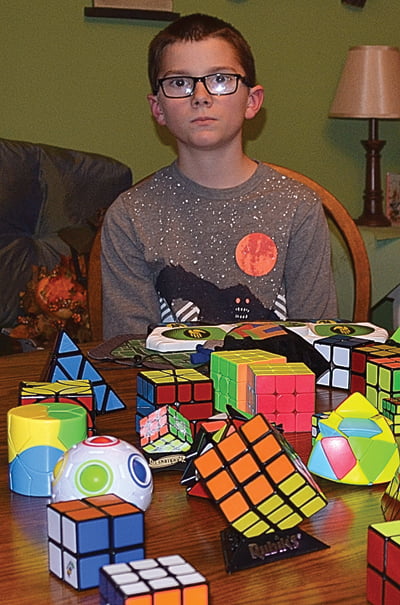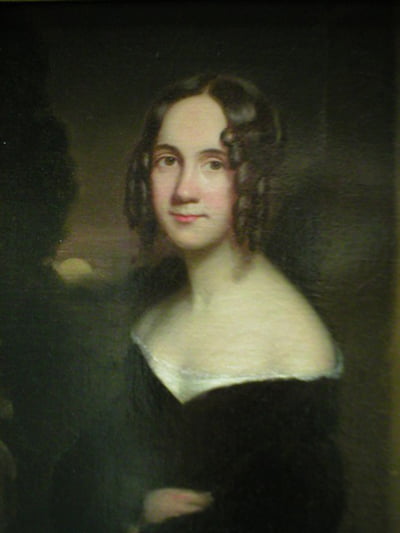
Suzanne Stewart
Staff Writer
In 1974, a small, hand-held 3-D puzzle known as the Rubik’s cube was invented. The color-coded, six-sided puzzle tested the skills of youngsters who attempted to get all the same color blocks together by turning the sections of the cube.
The popularity of the cube grew – as did the styles and sizes – and today, there are thousands of “cubers” who spend hours studying the puzzles and displaying their talents at competitions around the world.
One such cuber is 11-year-old Wade Garber, son of Scott and Rebecca Garber, of Green Bank. Garber discovered he had a natural talent for the Rubik’s cubes when he got one for Christmas last year.
“My grandma [Kathy Garber] gave me this one – that was my first one – and I wanted to figure out how to do it,” he said. “I would see videos on YouTube, and I would watch them. They would be four-seconds or five-seconds long, and I wanted to learn how to do it.”
Wade’s interest grew and soon his collection did, too. Before long, Wade had every shape and color of Rubik’s puzzles you can imagine.
“I got interested, and it was really fun to start doing them,” he said. “I got one of these [Pyraminx], and I learned how to solve it and after that, I wanted to learn more. I just learned this one a couple weeks ago – it’s a three-by-three.”
By August, Wade was ready to hit the competition circuit to put his skills up against other cubers. The family traveled to York, Pennsylvania, where they were all surprised by the scope of the cubing world.
“I’ve never felt so unintelligent as I did when I walked in there,” Scott said.
“It’s funny because we always thought Wade was the only kid into this, but it’s a whole world,” Rebecca said. “It really is.”
The competition had roughly 180 participants, several of whom were Wade’s age. The competition was steep and had the added difficulty of all participants being pitted against one another, regardless of age.
Wade seemed disappointed when he said he placed 70th, but at the same time, he was up against cubers in their teens and twenties, so it was still a great accomplishment.
Although he didn’t place as high as he wanted to, Wade said he had a lot of fun meeting other cubers and seeing all the different kinds of Rubik’s cubes and puzzles there are to try.
His passion for cubing has grown and has led to some jokes in the family. When he is asked if he practices a lot, his parents have a hearty laugh.
“The question should be ‘do you do anything else during the day?’” Rebecca said.
“Yes, I do,” Wade said, answering his mom. “I go to school. I watch videos of cubers. I make them, too, on YouTube.”
Nothing can distract Wade from solving a puzzle – not talking, or his brother, Reed, trying to get his attention, or even being blindfolded.
Wade sometimes practices with a blindfold on and has solved a three-by-three rather quickly “cube unseen.” He can even solve a two-by-two with his feet.
“I create a virtual cube in my head so I can try to get it accurate,” Wade said of being blindfolded.
Wade has tried to share his love of cubing with his brother, but Reed prefers collecting dinosaurs.
“I try to work with him,” Wade said. “It’s hard to sometimes.”
Wade’s parents are excited he has found a passion and thinks it’s great there is a community of cubers he can get together with at competitions.
Bookworms and football players were sitting side-by-side at the competition.
“Usually, these two types of people don’t hang out together,” Scott said, “but they found a common interest.”
Wade wants to continue to compete, but for now, it’s practice, practice, practice.
Suzanne Stewart may be contacted at sastewart@pocahontastimes.com



